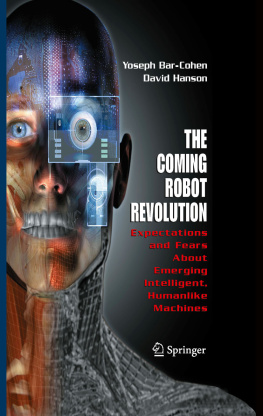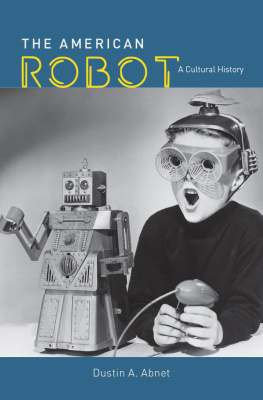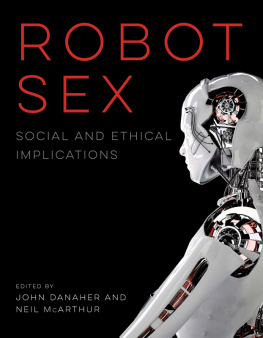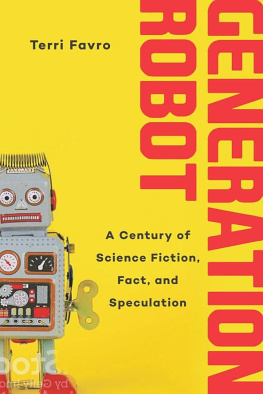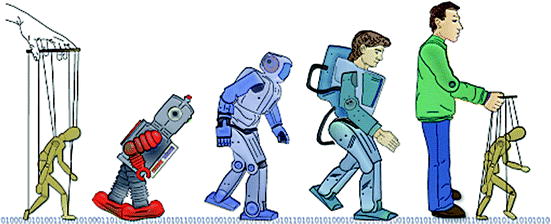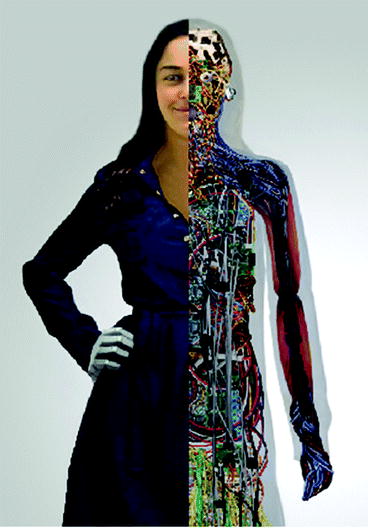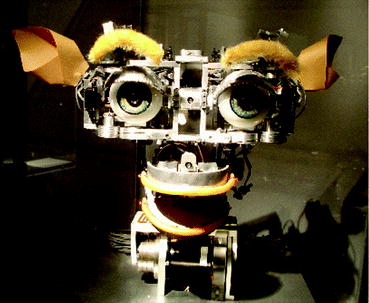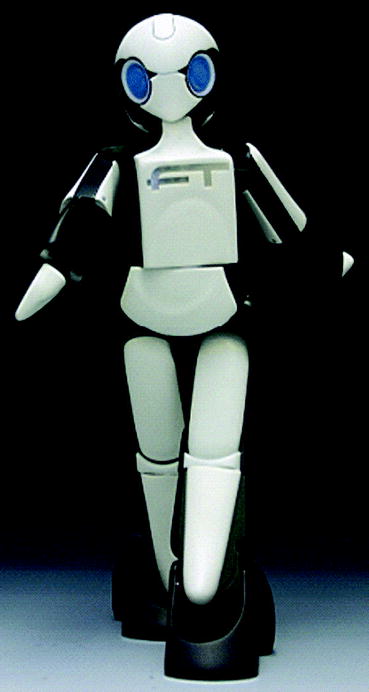Springer Science+Business Media, LLC 2009
David Hanson and Yoseph Bar-Cohen The Coming Robot Revolution 10.1007/978-0-387-85349-9_1
1. Introduction
Abstract
Imagine you are having a polite conversation with a receptionist when you check into a hotel where you suddenly get the feeling that something is weird. In a flash you realize whats wrong this is not a real person but rather a robot. Your first reaction would probably be Its unbelievable she looks so real, just as you would react to an artificial flower that is a good imitation. With a flower, though, you can touch it to find out if it is real; here, you must rely on your other senses to confirm your suspicion.
Imagine you are having a polite conversation with a receptionist when you check into a hotel where you suddenly get the feeling that something is weird. In a flash you realize whats wrong this is not a real person but rather a robot. Your first reaction would probably be Its unbelievable she looks so real, just as you would react to an artificial flower that is a good imitation. With a flower, though, you can touch it to find out if it is real; here, you must rely on your other senses to confirm your suspicion.
This science fiction scenario is rapidly approaching reality, as the trend in the development of humanlike robots continues. An illustration of a humanlike robot is given in Figure , where externally the robot looks like human. Although this figure shows a rendered image of a human and a simulated internal hardware, the humanlike robots today are being made to look relatively close to lifelike.
Figure 1.1.
An illustration of a humanlike robot and its internal organs. Robots are increasingly being made to look lifelike and operate like humans. The human face is a photo of the graphic artist Adi Marom.
Since the Stone Age, people have used art and technology to reproduce the human appearance, capabilities, and intelligence. Realistic humanlike robots and simulations, which once seemed just a fantastic, unattainable extension of these efforts, are starting literally to walk into our lives, thanks to recent advances in the development of related technology. Such robots originate from the efforts to adapt and imitate, inspired by nature or more specifically using biology as a model for mimicking. A related field known as biomimetics involves the study and the engineering of machines that display the appearance, behavior, and functions of biological systems.
Robots that have humanlike features have been given many names, including humanoids, androids, and automatons. There are many other terms that are used to describe humanlike robots, but the following definitions show the basic distinctions between humanoids and humanlike robots, while Table lists the wide variety of names and terms that identify various robotic machines with human features.
Table 1.1.
Widely used terms that identify various robotic machines with human features.
Term | Description |
|---|
Android or Zombie | Science fiction creature, mostly a robot that looks like human male |
Anthropomorphic machine | A machine that has the attributes of human characteristics. The word was derived from the Greek words anthropos, which means human, and morph , which means shape or form |
Automaton | Mechanical human |
Bionic human or Cyborg | A human with a mixture of organic and mechanical components |
Gynoid, Fembot, and Feminoid | A robot that looks like human female |
Human assistive devices | Prosthetics, exoskeletons, and walking chairs using two legs |
Humanlike robot | Synthetic human, artificial human, or robots that look very similar to humans |
Humanoid | Intelligent mechanical human. A robot with general human features including a head, a torso, hands, and legs, but has no detailed facial features |
Humanoids
Robots that have a somewhat human appearance, with a general shape that includes a head, hands, legs, and possibly eyes, are called humanoids. These are fanciful and easily identified machines that are obviously robots (e.g., making them look like astronauts with a helmet-shaped head). The task of roboticists who are making such robots is relatively easy, and it involves fewer requirements than dealing with the complex issues associated with making completely humanlike machines. Such robots include the robot head, Kismet, by Cynthia Breazeal (see Figure ), which was made by Tomotaka Takahashi, Robo-Garage, in Kyoto, Japan. Kismet clearly looks like a machine with animal-like ears, but it is included in this chapter since the expressions it makes are very humanlike. It is interesting to note that the Kismets facial expressions were designed to represent correct social behavior, and that these expressions are generated by computer models of cognition that allow artificially simulating a humans perception, attention, emotion, motivation, behavior, and expressive movement.
Figure 1.2.
The autonomous robot head, Kismet, was developed by Cynthia Breazeal at the MIT Artificial Intelligence Lab. Photo courtesy of Sloan Kulper, Boston, MA, who photographed this robot at the MIT Museum http://web.mit.edu/sloan2/kismet/
Figure 1.3.
The Female Type by RoboGarage is an example of a robot that can perform functions emulating humans. Photo courtesy of Tomotaka Takahashi, Robo-Garage, Kyoto, Japan.
Humanlike Robots
These are machines that are barely distinguishable from real humans; here, roboticists are making every effort to copy the appearance and behavior of humans as realistically as possible. Roboticists building these kinds of robots are mostly from Japan, Korea, and China, with few found in the United States. Examples of developed humanlike robots are seen in Figures the roboticist Hiroshi Ishiguro, from Japan, and his replica in the humanlike self-image robot called Geminoid are shown, and the similarity in their appearance is quite impressive

